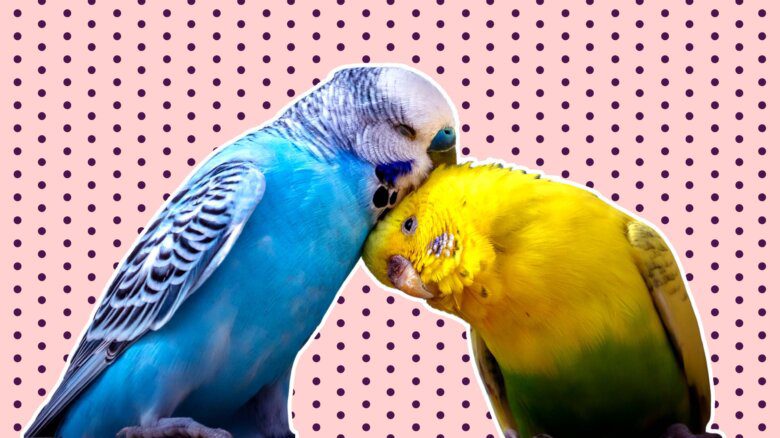One of my friends temporarily deactivates Facebook on Mother’s Day — to “avoid the barf fest,” as she once put it. It can be really difficult to read mushy posts about other people’s mothers (however selective they might actually be) if, like my friend and like myself, you don’t always have glowing maternal stories of your own to share.
Some of my stories are glowing: those of my mom weaving fascinating stories for us as kids, of her quirky, working-class phrases, of her constructing such a magical winter wonderland every year that I’m still obsessed with Christmas. But then there are other stories that I don’t yet know how to write. How do you write about being harmed without harming other people? How do you write about people made fragile without endangering the fragile bonds between you? I still don’t have answers to these questions, so I am grateful to other femme writers that have found the words to write about their hard relationships with their mothers.
I will always remember reading beloved femme writer and activist Amber Hollibaugh’s description of her mother in her memoir My Dangerous Desires: A Queer Girl Dreaming Her Way Home: “I didn’t know what to do with those few memories I could pull forward — not of my father’s hand striking me, but of my mother’s. Of her face brutally set in the daily anger she shared with the only other female in her galaxy: her daughter. Her terrible sadness and fury, a sadness and fury I increasingly understood as I got older and faced the same choiceless expanse she could never escape . . . Yet she was also the dazzling female icon of my childhood.”
“How do you write about people made fragile without endangering the fragile bonds between you?
”
It was the first time I had encountered another complicated mother/daughter relationship that resonated with me. I experienced my mother in much the same way. As a child, I grew accustomed to her rage that seemed ever-ready to explode to the surface, but I still remained in awe of her. I loved watching her dress up in her church clothes on Sundays and when she let me play dress-up in her things on other days. I loved listening to her stories, how boisterous and animated she became; she could scream, I hate you at my dad so loud it made me want to run laps around the backyard. To me, she was glamourous, powerful and yes, a little terrifying.
As an adult, I now know that the sadness and fury I saw in my own mother had less to do with me, and more to do with her still reeling from her own experiences of abuse during a time when discussions of trauma were less prevalent, and therapy was more stigmatized. Now, I recognize that what I experienced as fury was my mom trying to keep herself safe, a traumatized person’s way of modelling self-love. Now, I appreciate the ways she fought for safety, for something better, even if she didn’t always get it right.
But for the part of me that needed it, that is still healing, reading Hollibaugh’s words that described her mother was like pulling on a dress that didn’t need any alterations: it fit, there was room for all of me. It made my belly feel full, like the best poetry and prose does. At once nourishing and comforting, it was like a mother itself, one that soothed the hurt I felt over my actual mother. I knew that I had an ally, someone who understood something of my experience. And Hollibaugh’s memoir isn’t the only one. It is one of many influential femme memoirs — a genre called femmemoir.
Memoir isn’t exactly considered literary — especially when written by women. It is dismissed for being confessional and artless, just as women and femmes are demeaned for being too emotional — for being too much in general. It is fitting, then, that femmemoirs are a substantial part of femme literature. Through memoir, femme lesbian Joan Nestle has told the stories of lesbian bar culture in the 1940s and 1950s where femme is said to originate.
Through memoir, Hollibaugh and Leah Lakshmi Piepzna-Samarasinha have discussed femme as a radical and subversive gender identity, a perspective that dominated the femme discourse in the late 1990s and early 2000s. Other femmemoirs written more recently by Piepzna-Samarasinha, Amber Dawn and Kai Cheng Thom tell stories of communities of colour, sex workers and trans women trying to keep each other alive. Through memoir, we learn how to map our community and history; we learn our femme lineage.
Hollibaugh’s memoir details the struggles of growing up female, queer and working-class, the struggle to embrace desire and queer sexuality when women were supposed to be heterosexual, passive and chaste, and the struggle of being femme during the culture wars of the 1970s and 1980s that demonized butch/femme (alongside leatherdykes, sex workers and other sex radicals).
One of the major gifts of femme writing, something Hollibaugh does so well, has been the normalization of queer femme sexual desire — what Piepzna-Samarasinha has elsewhere described as, at its core, a “femme hunger,” a “particularly femme strength of sexual openness, vulnerability and need.”
Writing about queer femme desire in a culture that represses queerness and women’s sexuality was an incredibly daring political act, and an act of deep generosity. For Hollibaugh and Joan Nestle, their mothers were models of what female sexuality could look like. In A Restricted Country, Nestle writes, “No the wonder is my mother/who taught me when to go on my knees/and when not/who kept alive her right to sexuality when sex was killing her.” In My Dangerous Desires, Hollibaugh writes, “So it is no wonder to me that I crave both safety and peril in equal amounts and that these two qualities are wedded in my psyche like twin sides of the same desire. That is desire for me.” It seems that seeing their mothers be unabashedly aggressive and desirous gave Hollibaugh and Nestle permission to seek pleasure and explore sexual taboos for women — both of which categorize the erotics of the butch/femme culture of the 1950s onward.
In turn, writing these desires — these dangerous desires — gave permission to other femmes to embrace their own. Katherine Millersdaughter once wrote: “Finally, fortunately, I discovered Joan Nestle. I have laid my hands on The Persistent Desire as though it were my lover, as well as my own self and body, sucking us up past my lips and across my tongue. How many of us post-Stonewall dykes have come into our own and other women’s bodies through other women’s writing?”
Many femmemoirs have also used their maternal relationships — and their relationship to coming into queer desire — to offer reflections on abuse and roadmaps for survival. Piepzna-Samarasinha wrote Dirty River: A Queer Femme of Color Dreaming Her Way Home about surviving childhood abuse and running away — about loving, writing and struggling as part of queer communities of colour in Toronto before moving west and making it home. The essays “Mom” and “Mama, Three Ways” related the familiar feeling of loving someone who has both hurt and held you, and it modelled the miraculous generosity of making space for the pain and complexity of both mother and child. When I first read it, I cried.
Though the specifics of my experiences differ from both Hollibaugh’s and Piepzna-Samarasinha’s, the familiarity that echoed in my body the first time I read their stories allowed me to give words to what I had always known on some level, what I stored in my body, what had waited for a safe moment to pour out: I grew up in an abusive household, so did my mother. And our relationship has been irrevocably shaped by it. Reading these femmes’ stories made me feel validated and seen, acknowledged for what I’ve been through and grown from — even if the witness was an inanimate object I held in my hands.
“If femme texts offer frameworks for how we might embody queer desire, then they can also model for us how we might survive abuse, how we might make it home.”
My reverence for these tales of messy maternal figures reminds me of Millersdaughter’s ruminations on the incredible value of finding The Persistent Desire and other accounts of queer femme sexual possibilities. Femmemoirs have given us names for our feelings, role models to look up to and, perhaps most importantly, a way to find each other. Reading femme writing is how many of us learn our femme lineage; our femme past, present and future. While much of femme discourse is, importantly, about sexual desire, I see these texts as opening up other kinds of desire as well, like the desire for intergenerational bonds, for roadmaps for survival or for reassurance from other femmes that we’re not alone.
I share with these femme writers not only queer sexuality, feminine gender presentation and feminist politics, but also the specific pain of a tumultuous relationship with my mother — a relationship made painful by the misogynistic violence unloaded onto generation-after-generation. If femme texts offer frameworks for how we might embody queer desire, then they can also model for us how we might survive abuse, how we might make it home. I’m starting to think about these femmemoirs as mothering texts, the texts that have brought me up into femme, brought me up like a mother might. The essays in My Dangerous Desires, Dirty River, and A Restricted Country give me solace. They’ve been there when my actual mother couldn’t be: through the stretches of not speaking, in the aftermath our most violent fights and on days when I simply wished I felt more understood and that I could be held by someone older.
Queer wisdom tells us we can choose our families, which has been critical for many who have lost theirs due to homophobia, or whose queer families have always sat outside of “traditional.” This wisdom gives me license to continually reconfigure my relationship to my mother. We may not be like the mothers and daughters of social media, but we’ve been through proverbial hell and back together and still want to hang out over the holidays — even if I keep her on limited profile the rest of the time.
This wisdom also gives me license to reimagine books as other mothers — things I can turn to for guidance, for comfort, for nourishment. Instead of laying my hands on The Persistent Desire like a lover, I cuddle up next to Dirty River, or My Dangerous Desires like a mother.
Femmes reject heterosexual gender roles, but reappropriate feminized qualities like nurturance — something we learn or lack from our mothers — and redirect them toward their queer communities. Care is an important part of femme culture: from protecting butch lovers during McCarthyism to contemporary accounts of building intersectional political alliances. Femmes are committed to caring for each other and their broader queer communities — as much is detailed in femme writing, from Nestle’s to Thom’s. And this is how my fore-femmes have cared for me: by writing their stories.
Dirty River acknowledges “every queer femme/of color/survivor/crip who has ever written their life.” Even in the abstract, this is recognized as an act of political resistance, of bravery, of generosity that benefits the next wave of queer uprisers and survivors. There are specifics, too: Dirty River’s subtitle “A Queer Femme of Color Dreaming Her Way Home” references Hollibaugh’s “A Queer Girl Dreaming Her Way Home,” suggesting there has been something valuable inherited from one to the other, suggesting the existence of a femme lineage. Writing our stories helps us heal, but also leaves a record for others that can be used as a guidebook, a witness or even a mother. This is how we take care of each other, even if we never meet. Our stories hold each other anyway.

 Why you can trust Xtra
Why you can trust Xtra


